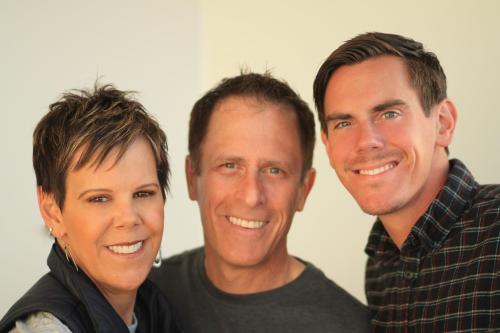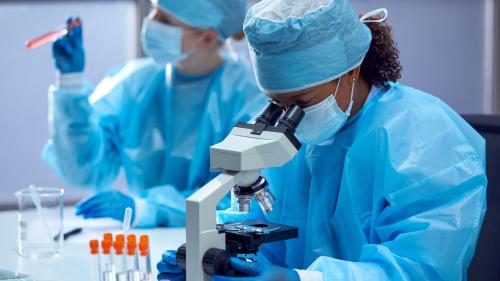
-
Understanding primary immunodeficiency (PI)

Understanding PI
The more you understand about primary immunodeficiency (PI), the better you can live with the disease or support others in your life with PI. Learn more about PI, including the various diagnoses and treatment options.
-
Living with PI
-
Addressing mental health
-
Explaining your diagnosis
- General care
- Get support
- For parents and guardians
-
Managing workplace issues
- Navigating insurance
-
Traveling safely

Living with PI
Living with primary immunodeficiency (PI) can be challenging, but you’re not alone—many people with PI lead full and active lives. With the right support and resources, you can, too.
-
Addressing mental health
-
Get involved

Get involved
Be a hero for those with PI. Change lives by promoting primary immunodeficiency (PI) awareness and taking action in your community through advocacy, donating, volunteering, or fundraising.
-
Advancing research and clinical care
-
Research Grant Program
-
Consulting immunologist
-
Diagnosing PI
-
Getting prior authorization
-
Clinician education
-
Survey research
-
Participating in clinical trials

Advancing research and clinical care
Whether you’re a clinician, researcher, or an individual with primary immunodeficiency (PI), IDF has resources to help you advance the field. Get details on surveys, grants, and clinical trials.
-
Research Grant Program
During the 2021 IDF National Conference in June, two Severe Combined Immunodeficiency (SCID) experts teamed up to present a detailed update on the landscape of SCID.
Dr. Donald Kohn from the University of California Los Angeles and Dr. Jennifer Puck from the University of California San Francisco discussed topics including SCID definition, clinical features, diagnosis, inheritance, and treatment options. In addition, they also fielded questions from members of the SCID Community.
The following is a condensed version of the June 2021 Q&A which touched on subjects such as the future of SCID treatment, criteria dictating treatment choices, and the types of SCID being treated in gene therapy clinical trials.
Gene therapy for ADA SCID has been in the news a lot lately. Can you share any information or an estimated timeline for when your compassionate use program might begin?
Dr. Kohn:
The plans are still being worked out. There is one batch of the vector from the same source that we used for the trial that Orchard has that we will get some of. I don’t know how much that will be, and that will determine how many patients we can treat right away – right away meaning 3 to 6 months from now.
The longer game is to get this back into the hands of someone who can get FDA approval and make it available on an ongoing basis.
In the technical terms of the university, I’m just the inventor. I don’t control the intellectual property which belongs to the University of California Regents. The Office of Intellectual Property is talking to potential industry partners who may take this on and try and get it approved.
Are researchers exploring gene therapy for other genetic forms of SCID beside those that are currently in clinical trials?
Dr. Kohn:
Yes, there’s been at least 20 different genes that have been described as causing SCID. ADA-SCID was the lowest hanging fruit because it’s expressed everywhere in the body. X-linked SCID was the next identified. It’s a big population of patients, so that, as you know, is going on. Then, there’s the Artemis SCID work.
This makes the point that for each even genotype it’s a whole separate project. We are working in my lab on RAG-1 SCID with a lentiviral vector approach, and I know there’s an activity in Europe to develop a lentiviral RAG-1 SCID.
A number of groups are working on gene editing approaches to use CRISPR to add a normal copy of the gene in the right location. I know people are working on IL-7 Receptor Alpha, JAK-3, and we are doing a project on an ultra-rare form that we are just starting to get going on.
The economics of it are going to be challenging. It’s going to be hard to get a company to take on something where there’s three patients a year with that genotype. We, as a community, are going to have to look for a different model.
For ADA, for X-SCID, for Artemis, they’re common enough that a company might be in that business but for the ultra-rare forms, we may need to come up with some non-profit model where we can self-sustain the ability to treat more patients.
I think it will come, but it’s going to take a while to work out both the science for each individual genotype and then how do you get a grant for that and how do you make a sustaining commercial version of it.
Dr. Puck:
I would add gene therapy, during its history, initially had the problem of getting enough of the gene into cells to provide anything like adequate function at all.
There are some genes where, as long as you get a certain amount to make a difference, it really doesn’t matter how much you get or where in the cell cycle it gets expressed or exactly which cell types at which stage of their development.
On the other hand, there are other genes where too much expression can cause leukemia or cause malignant proliferation or other kinds of problems.
The regulation of the expression of the different SCID genes has turned into a big deal. What Dr. Kohn was mentioning is the reason to go for gene editing instead of just adding back a copy of the gene would be that that uses the cell’s own physiologic normal control mechanisms for turning on and off. For some genes, that makes a lot of difference. For other genes, not so much. Each gene has to be looked at in its own context.
Can you provide insight for an infant eligible for both bone marrow transplant or treatment through gene therapy. How do you counsel a family through which is the best option?
Dr. Kohn:
Some of it depends on who is the match. If the match is a perfectly matched brother or sister, I think that’s still the first choice. There’s a report we put out about two years ago where we said that based on the available evidence gene therapy is probably equivalent to a matched sibling donor. I think still most transplant centers if there was a matched sibling donor would recommend that.
It becomes much harder when there’s not a matched sibling donor, and then the options are either gene therapy or unrelated donor, an adult, or a cord blood from someone who matches or the approach pioneered by Dr. Buckley at Duke, taking cells from a parent, removing the T cells, and transplanting those.
Historically, the unrelated donor or the parent donor, the chances for a successful outcome were lower than a matched sibling donor. But it’s a moving field and transplant continues to get better. For example, the way marrow from parents is processed nowadays is better than it was 10 or 20 years ago.
The approach we take is to tell a parent all the options, as honestly as you can, and let them decide whether they are worried about the risks of gene therapy because it’s new and less well experienced, or are they worried about the risks of graft versus host disease from an unrelated donor.
We know that all 50 states do screening for SCID. That’s how most children get picked up and sent for confirmatory diagnosis. Generally how many days, or weeks, does it take from that identification in newborn screening to get a genetic diagnosis?
Dr. Puck:
Somewhere in the first month of life, generally, babies are getting a gene diagnosis of SCID already. Of course, they knew they had a chance of having SCID and knew they had very low TRECS well before that – one to two weeks.
It’s very quick and whole lot quicker than we used to see, but having made those great strides, we’re still saying, oh, we wish it were even quicker.
How do you see the future of SCID diagnosis and treatment evolving in the next 5 to 10 years?
Dr. Puck:
In terms of diagnosis, I think newborn screening in the U.S. has made a big difference here, but we’d love to see it happen in the rest of the world.
In terms of treatment, we obviously think gene therapy has a lot to offer… Treatment is certainly better earlier than later. One of the things that we’re trying to look at now is how to get complete immune reconstitution, not just T cells, but B cells, and NK cells too for all the patients.
Dr. Kohn:
In terms of gene therapy and transplants, our techniques will continue to get better. You’ll have better supportive care with antibiotics, antifungals and again the early recognition, getting patients treated is really critical.
Besides those techniques getting better, I think the next biggest issue that we would all like to see progress on is moving away from using chemotherapy to facilitate engraftment.
We know that if you don’t give any chemotherapy before you give back the patient cells or those from a donor, you get very little engraftment. It’s clear that you have to make space for the cells to grow.
The big hope is that a number of groups (universities and companies) are working on antibodies that can be given that would eliminate the cells in the bone marrow and make space. That would take away, really, the major risk of stem cell transplant whether it’s from gene therapy or from a donor.
If we could successfully get engrafted, and not give the patients three months of age chemotherapy, that will be huge – and I think that will happen. The initial versions are not great, like a lot of times is the case in terms of their activity, but now it looks like combinations of two different antibodies, or sort of giving the antibodies an extra kick with a drug that can get rid of the stem cells, that’s really going to be here in three to five years.
Gene therapy is currently only conducted via clinical trials and is not an approved treatment through the FDA. When or what is the timeline for gene therapy for some type of SCID to be approved by the FDA?
Dr. Kohn:
I’ll talk about ADA. The ADA, as I said in the beginning – it got derailed. The goal was to have had it approved by now. We’ve lost several years on that, unfortunately. I would hope within two years from now would be my goal that it would be approved, based on the data we obtained in the previous studies. So, that’s my ideal timeline.
I think the barrier that Orchard ran into is that the FDA, before it gives approval, wants the drug company to show that it can make the drug under the pharmaceutical conditions that are FDA standards.
The bar is quite high for all the drugs. The FDA wants the drugs to be pure and potent and all those other characteristics, and so I think that’s a challenge, and that it’s more experience in manufacturing the cell product, which is really the drug.
Hopefully, that will get easier as companies are working on closed systems where you put the bone marrow in on Monday and you come back in on Thursday and it’s done.
I think there will be advancements in the cell processing that can make it easier to get approval and also hopefully bring down the cost of the product.
When do you foresee the technology available that you described – processing the bone marrow on Monday and coming back Thursday and it’s done?
Dr. Kohn:
In fact, when we started the trials, that’s kind of how it was done. We’d collect the bone marrow on Monday and have it in culture with getting the virus and giving it back fresh on Thursday.
The problem is a lot of the testing that we normally would do wasn’t completed at that time. It takes three weeks to do the full FDA-compliance sterility test on the product - to know how many cells took up the gene takes two to three weeks.
When we changed to freezing the cells, we could then do all those tests. I don’t know if the automated (process) will actually speed up the availability of the cells to give back the cells to the patient. I just think it will lower the cost and make it more consistent.
To listen to the entire presentation, which contains the Q&A at the end, click here.
Related resources
Sign up for updates from IDF
Receive news and helpful resources to your cell phone or inbox. You can change or cancel your subscription at any time.





The Immune Deficiency Foundation improves the diagnosis, treatment, and quality of life for every person affected by primary immunodeficiency.
We foster a community that is connected, engaged, and empowered through advocacy, education, and research.
Combined Charity Campaign | CFC# 66309




